
|
 |

|
 |
Mad N Divine - Lalitha Venkat, Chennai e-mail: lalvenkat@yahoo.com December 23, 2011 Kartik Fine Arts and Dr. Anita Ratnam present the annual Natya Darshan Conference on December 23, 24 and 25, 2011 at Bharatiya Vidya Bhavan, Chennai. This year's conference is curated and produced by Arangham Trust in partnership with Kartik Fine Arts for the academic component of the December dance festival. Dr. Ketu Katrak (University of California, Irvine) is the consultant for the conference. The theme of the conference is MAD & DIVINE and it is a gathering of performers, poets, scholars, and cultural commentators on the varied nuances of the lives and creative works of India's beloved female mystic poets like Andal, Avvayar, Meera Bai, Lal Ded etc. Below are responses from the participants on their exploration of the theme: Anita Ratnam  When you were asked to convene the Natya Darshan seminar, what was your first reaction? I have always wanted to enlarge the scope of the discourse on dance besides performances. To have dancers listen to the varying strands that connect performance with text, scholarship and other art forms have always been of paramount interest. In all my own collaborations - though dance led - I have constantly looked for ways to link dance to contemporary life. I am not a stranger to conferences. I have convened the Natya Kala Conference for Sri Krishna Gana Sabha in 2000 and 2001 and have attended at least one conference in India or overseas every year. Your choice of 'Mad & Divine' as the theme. Subjects can be either something I am passionate about or something that needs to be addressed through a dance conclave. This time it was my abiding passion for Andal, who has shadowed me through her life, and link her life and words to the sisterhood of women who were all called mad through their individual obsessions and later made "divine" through social sanction. About the conference. Since 2000, so much has changed in life and technology. There are newer and faster ways of communicating and such novel ways of spreading the word. Social sites, sms, e-mails and You Tube are now indispensable to most of us. I have tried to make this conference visible through all these various ways. Beyond a mere conference, what purpose do you think this year's coverage will serve? I am expecting an eclectic crowd of dancers, students, scholars, society women and rasikas. What I am hoping is that the discourse carries on outside the actual performance confines and stimulates women and men to rethink the ideas of what it takes to be possessed and fanatical about something. It promises to be a wonderful get together. Come and join the 'melam,' talam' and 'vachanam' Dr. Archana Venkatesan 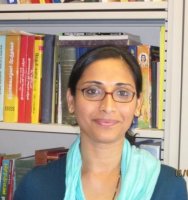 Is fully ecstatic devotion (madness) necessary to touch the divine? Arguably, the mystical experience (if one can generalize such a thing) oscillates between moments of union and moments of separation. The mystic's madness, characterized by a dissolution of self, by a perception of an alternate reality, or even a hyper-reality, occurs perhaps more tellingly during the long stretches when the divine is perceived as absent. To put it another way, it is the very inability to touch the divine, or more accurately, to sustain that touching--which is in its very nature ephemeral--that expresses itself in a kind of maddened longing. Dr. Devdutt Pattanaik 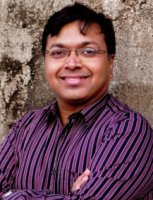 How does male trance differ from the female experience of ecstasy? I prefer to see things in human terms rather than gendered terms. Priya Sarukkai 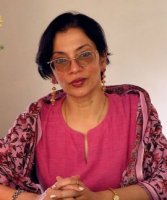 How difficult is it to translate Andal's classic Thamizh verses into English? How relevant are her verses today? On difficulty: Aandaal is a poet of dazzling genius. She packs each terse, splendid verse with multiple layers of meaning, like a series of shimmering reflections one below the other. Therefore her pasurams become phenomenally difficult to translate, yet doing so is a deeply satisfying process. Besides she sang in cenThamizh which demands close work with scholars of old Thamizh. And importantly, Aandaal was a mystic; she roamed realms beyond common experience. Her songs are drenched with the blaze of the sacred embedded in every material that constitutes ephemeral life; at the same time she calls timeless grace to illumine her. Therefore one needs to draw on all of one's spiritual imagination to hear her utterances bell through the skies and the centuries. This is an exhausting and transformative activity. Besides, the more one immerses one's self in her, the deeper grows the appreciation and delight. My translations have changed over the years: I abandon older versions, commit myself to newer ones. I'm in her thrall. On relevance: Mystic poets sought to cross all boundaries and seek themselves in consonance with creation. Translating sacred verse is, therefore, an act of faith in the possibilities of poetry of another time, tongue, texture of language and vision to be worlded in the now. Aandaal is known for her passionate calling to the divine and her intense awareness of the grace that permeates being; she sought to embed herself in this love that resonates with the rhythms of the cosmos. Her utterances are timeless; to render them into a contemporary English idiom is to renew their perceptive power for future generations. Vidhya Subramanian 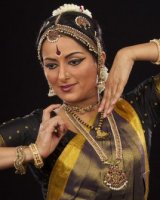 Your comment on the paradox of female poet saints resisting husbands and marriage while attaching themselves to male gods. It would be easy to categorize the attachment of female poet saints to male gods as jeevatma yearning for paramatma. Although that is definitely the core of Indian classical arts, thinking beyond or within this concept, one can interpret the apathy of these women to their husbands and marriage in other ways. The resistance to their earthly spouses may have been due to a sense of dissatisfaction with the patriarchal control that many of these men exerted. Ahead of their times, these women could not reconcile with the oppression and banality they were subjected to in their daily lives by the partners who were most often thrust upon them. In attaching themselves to male Gods, they were seeking the ideal husband, the hypothetical perfection that was lacking in their human husbands. Still seeking the complete soul mate, their devotion allowed them to create in their minds, a superior companion, someone they could converse with, extol, profess love to, and feel divine union with. Rajashree Shirke 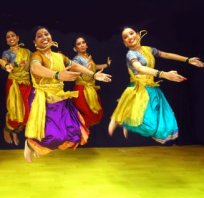 Do you think female mystic poets are a necessary part of our culture and why? During the Bhakti Cult that spread throughout India; the extreme emotional and popular poetry of the Indian Female Saint Poets sprouted out from many diverse corners of the nation. This genre of poetic literature gave a direct insight into the 'Indian female' - "Mad n Divine"- intense spiritual psyche. These female saint poets had a strong, conscious passion to vocalize their 'uncontrollable', 'unexplainable' connection with God, irrespective of caste, gender or class. This was the period of intense spiritual rupture that found vent through the female saint poets. The Bhakti Cult that had set aside the ritualism and dogma of Vedic religion provided an elevated sanctuary for hammering the thoughts, the spiritualism, and mainly the fervor of 'madness' of these female-mystic-saint-poets into society. Societal norms or Indian gender protocol were not even a concern on this platform that staged the esoteric devotional play of these Indian female mystics. These Female Mystic Saints are rightfully an indispensable part of our Indian culture and tradition as they have been our 'social reformers'. They rid the existing pageantry by presenting examples from their 'karma' in order to convince people that the way to God is simple, bringing peace and harmony; naturally, something that only a woman could do. The 'Female Mystics' became the 'cultural centers' that molded the society by being a part of it. These Female Mystics are a venerated class that attracted large numbers of followers. Their verses are now an integral part of the mainstream repertoire of the Kirtankaar tradition today - an invaluable treasury of Indian literature. Madhureeta Anand 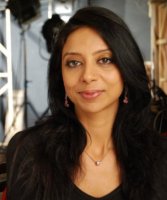 We only see the Naga sadhus in all footage or news but you have made a film on sadhvis. What are your most memorable experiences when you made this film? The women who are drawn to the Naga sect of the sadhus are naturally different from those who are a part of the Vaishanv sects. The Naga Sadhu way is fierce and hard and male dominated. And so naturally these women tend to have a certain quiet fierceness about them, which one can relate to. I found that being with them was very relaxing and cathartic because there is an inherent honesty and openness that is very appealing and uplifting at the same time. I can remember how easily they slipped between harshness and gentleness - as if they were the same thing. Nirupama Vaidhyanathan 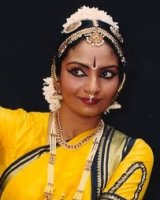 What inspired you to draw a parallel between Meerabai and St. Teresa of Avila? A few years ago, I was curious to find out about mystical literature in other faiths, and came across the work of St. Teresa of Avila. I read a book written by her, and was struck by the parallels between Catholicism and Hinduism. Then, when I realized that the lives of Meerabai and St. Teresa overlapped, with each wrapped up in circumstances that tested their faith in God, my curiosity turned into a quest to find out more about their lives. My paper at the conference is a result of this intellectual quest. Pallabi Chakravorty 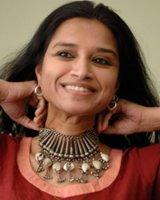 What is the line between sanity and madness and what role does cultural and gender bias play in this divide? The way you frame the query is a reflection of binary thought. The usual sacred / profane, mind / body problem. We tend to divide our world into neat categories for analyzing it, where as the phenomenal world is in continuous flux. Accordingly sanity is associated with the male, rational, and insanity with the female, mad. Consider how Freudian thought says that showing emotion is irrational, hysterical, female. However, rationality is not universal but culture bound. So is the construction of masculinity and femininity. Interestingly, what is "normal" is also a cultural construction. To counter these lines of thought (much of which comes from western philosophy) we can look at Hindu monistic philosophy to get an alternative view. Monism rather than dualism better captures the fluidity of the phenomenal world. In short, the line between sanity and madness does not exist but is a construction. Scott Kugle  What about Mah Laqa Bai inspired you to do research on her and to be a driving force to get her memorial renovated? I was first inspired to do research on Mah Laqa Bai because of her important position as a female poet in Urdu. She is one of the first women to compose a full divan of Urdu ghazals, in competition with male poets like Mir Taqi Mir and Khwaja Mir Dard, at the beginning of the "golden age" of Urdu poetry. But her personality is much deeper than just her poetry, as she was a dancer, singer, politician, and also sponsored many religious events in Hyderabad. She touched all aspects of Hyderabad's history and culture during the height of its power, in the late 1700s and early 1800s (just as British domination really set in). As for her memorial tomb and garden, it is just a beautiful and evocative place, at the foot of a sacred hill with a shrine to Imam Ali on top. I simply felt that it should be preserved and restored...along with several other scholar-activists in Hyderabad. So we formed a committee, wrote a proposal, and began to gather funds to start the work. The architectural heritage of Hyderabad was so rich, but as it became the modern capital of Andhra Pradesh, much has been lost or deliberately ruined. So we felt that preserving even one monument was a great feat, and this monument includes a garden and wells, so there was also an environmental imperative and a chance to improve the local community's water supply as well. The fact that this monument is linked to an artistic and spiritual woman makes it even more valuable! Chitra Visweswaran 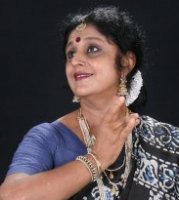 What in Meerbai's life / verses appeal to you? Her rebellion? Devotion? Madness? And why? All three! Ketu H Katrak 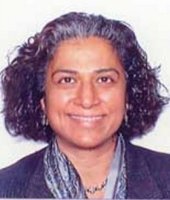 How do you understand the female saint poets' 'madness'? How is this madness connected to the feeling of divinity? The female saint-poets are judged by their families and societies in different historical time-periods as "mad" since they are so profoundly immersed in their love for the deity. Since the female saint-poets do not fulfill their usual and expected roles as daughters, wives, and mothers in patriarchal society, they are seen as eccentric, crazy, and outsiders to society. Their passion for the divine is expressed in ecstatic, even erotic poetry, music, and other expressions that have survived through the centuries to delight us today and we do not judge such artistic creativity as "mad" but rather as exceptional expressions of love for the divine. Akhila Ramnarayan 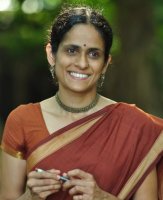 Your comment on the resurgence of feminine energy in spiritual movements recently. I am more concerned about the rise in women's participation in organized religion, particularly in fundamentalist movements. As Urvashi Butalia once said in a lecture, how do we respond to the fact that women were/are active participants and agents in communal riots (Godhra, Bombay, and Kashmir), ready to perpetrate violence, to be complicit in the killing, torture, and rape of other women, in the name of religion? These women are active agents in the political process and in the public sphere, but they blindly serve the interests of fundamentalists and sectarians. Though this point may seem unrelated to the question, the ways in which women's voices, and images of female spirituality, get harnessed or yoked to pernicious majoritarian interests and agendas, to women's own detriment and enslavement, is a growing concern the world over. Post your comments Please provide your name and email id when you use the Anonymous/blog profile to post a comment. All appropriate comments posted with name & email id in the blog will also be featured in the site. |